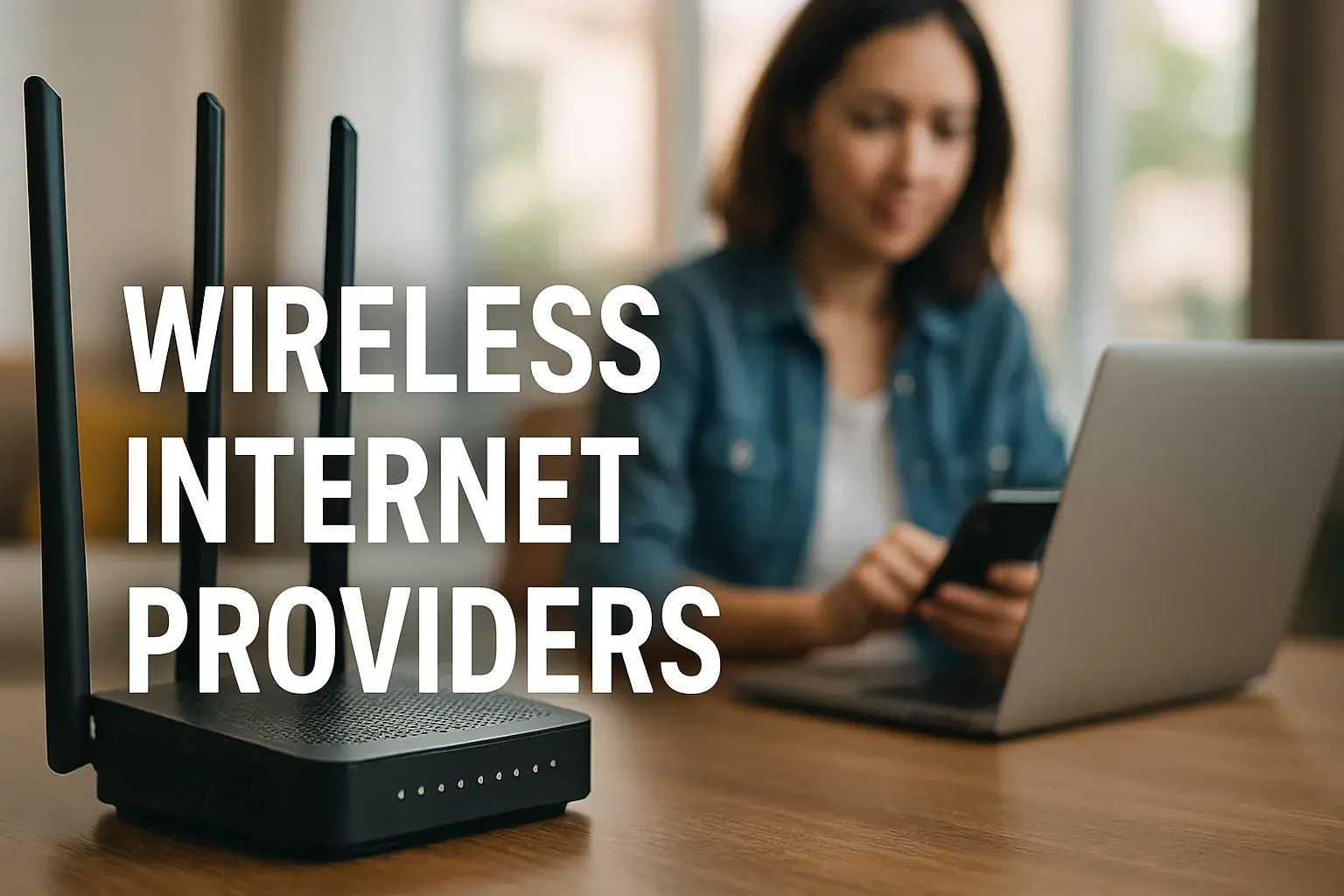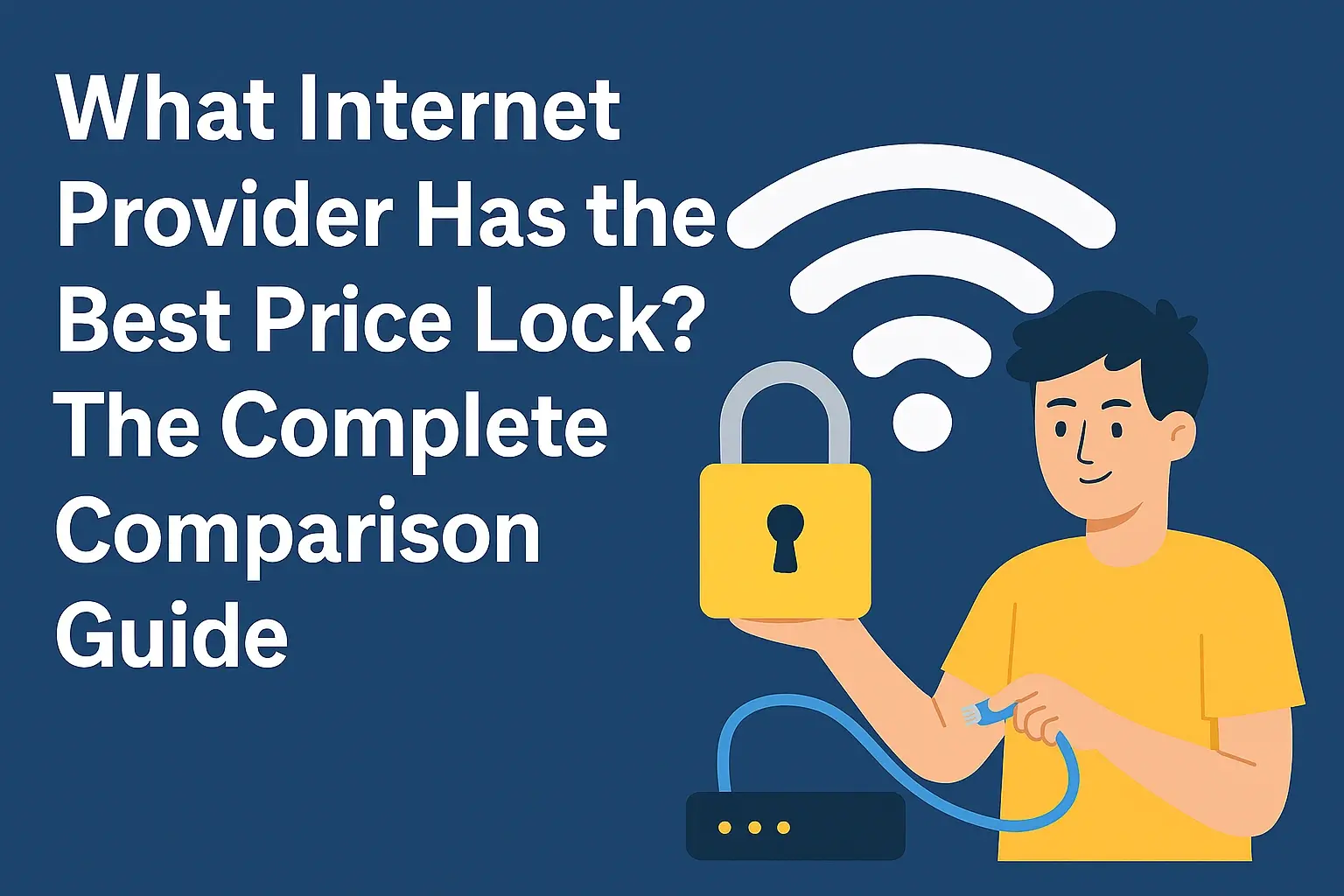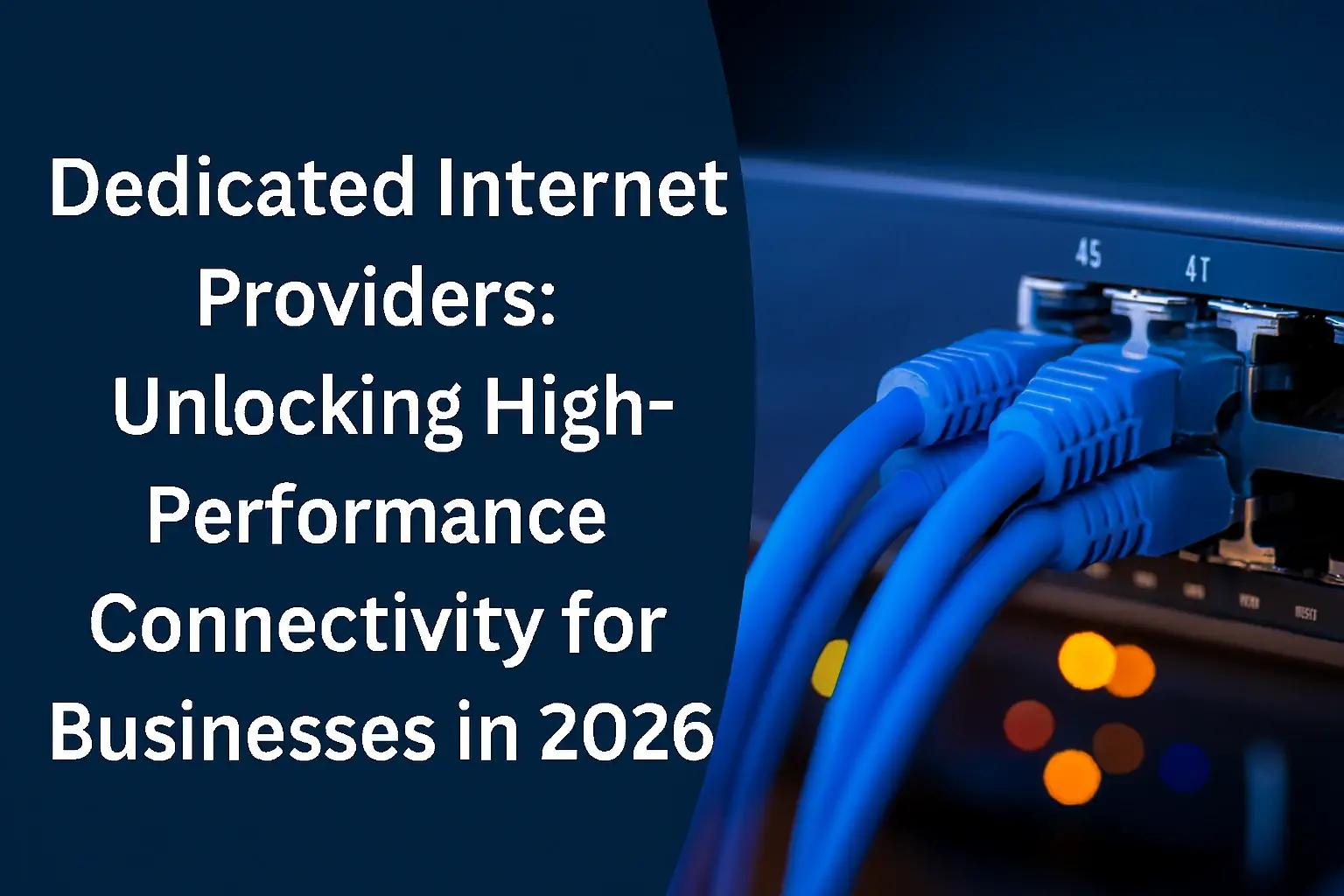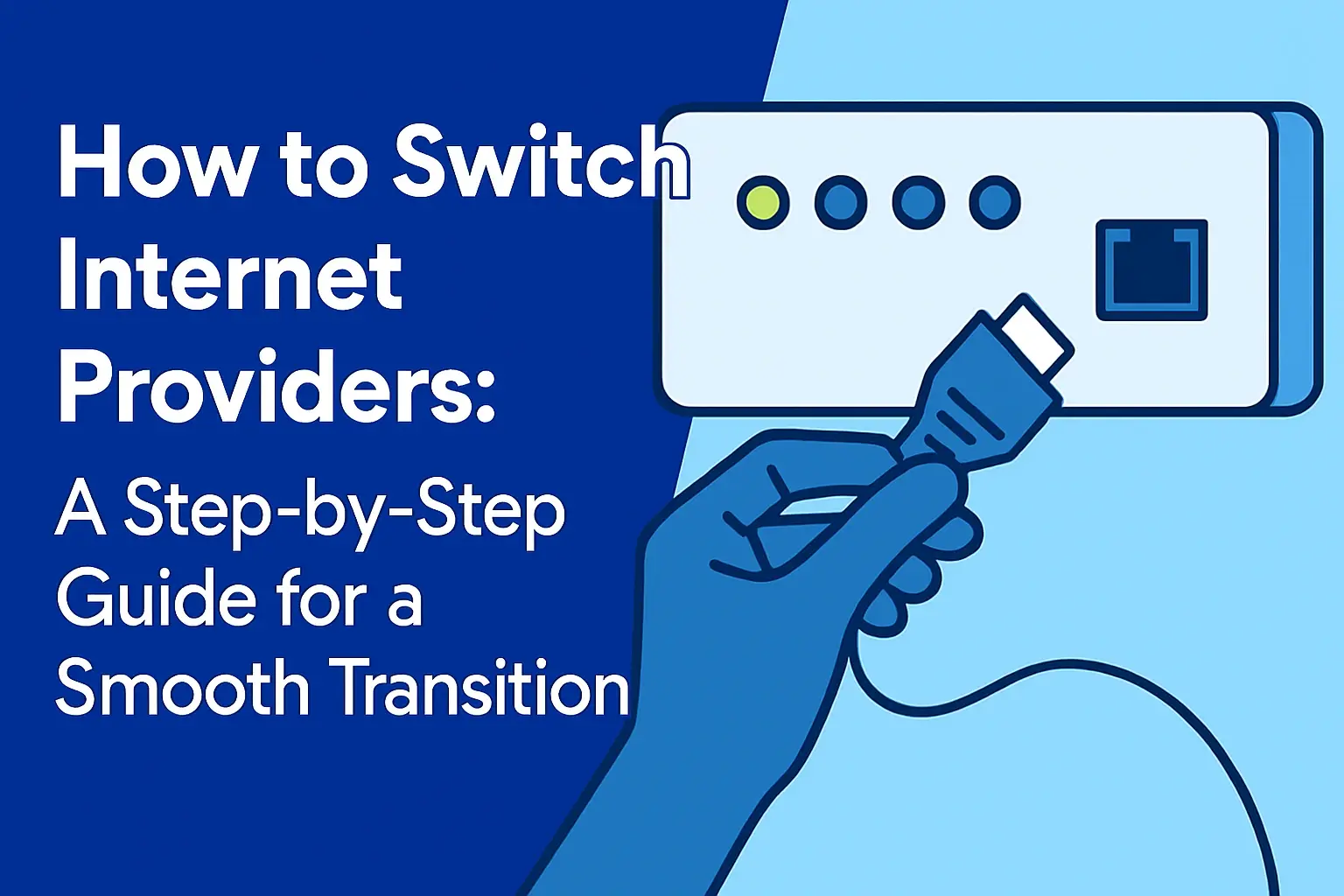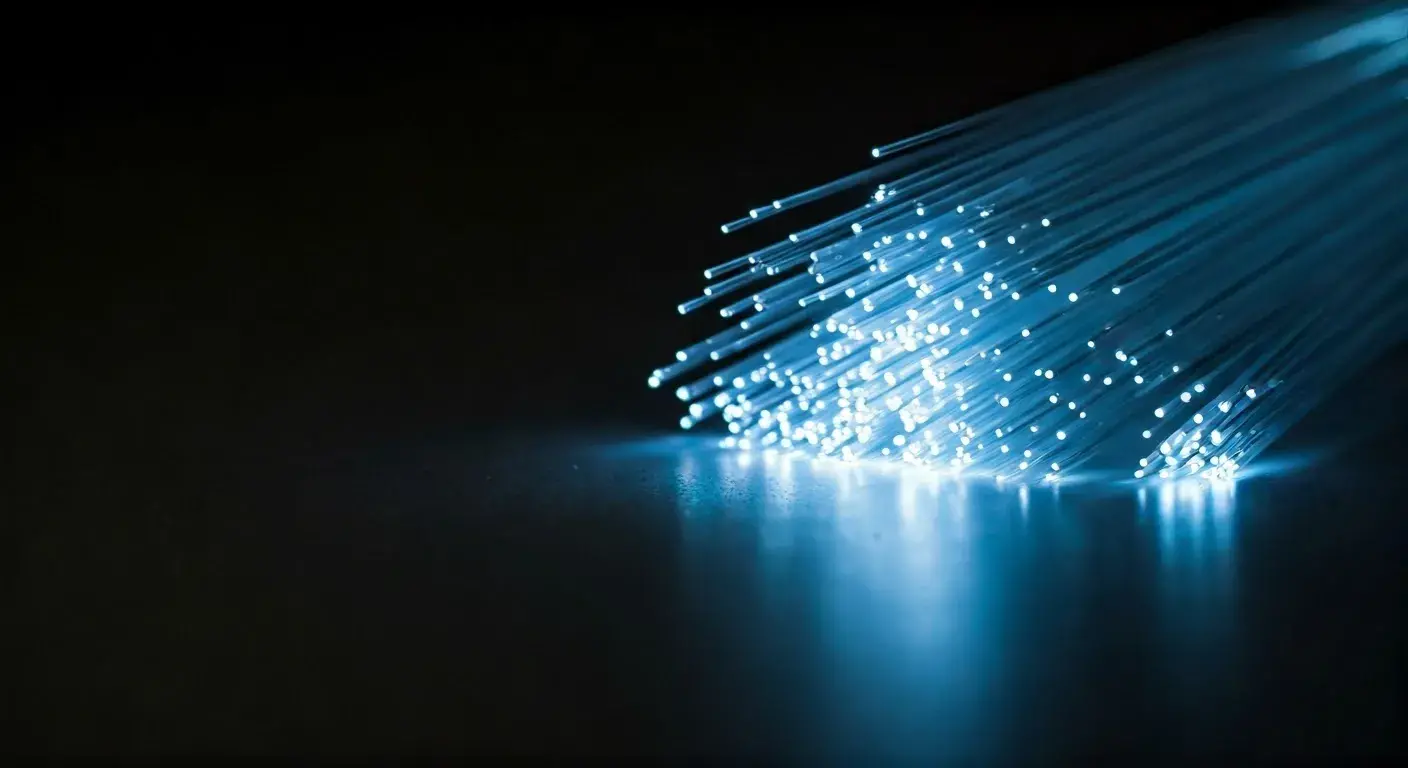
In today's world, having a fast and reliable internet connection is very important. Fiber internet, also known as optic internet, has become one of the best options. It provides better reliability and very fast speeds. In this article, we will look at the details of fiber optic internet, its benefits compared to traditional internet connections, and how it affects both businesses and home users.
Understanding Fiber Optic Internet
Fiber optic internet is different from other types of internet services because it uses fiber optics. This technology sends data as light signals that go through thin strands of glass or plastic. These strands are put together to make optic cables, which carry data at very high speeds.
Compared to traditional copper-based options like DSL and cable internet, fiber optic internet is much better. It uses light signals instead of electrical signals. Light signals face less interference and can go longer distances without losing quality. This makes fiber optic internet faster and more reliable.
The Basics of How Fiber Optic Internet Works
Fiber optic internet works in a very interesting way. It sends data using pulses of light. These light pulses move through very thin glass or plastic fibers that are inside optic cables.
Each pulse stands for a piece of data, just like dots and dashes in Morse code. At the other end, a special device turns these light pulses back into digital information that your devices can read.
This method of data transmission lets fiber optic internet do something that no other internet technology can do – it sends data at the speed of light. This means you get much faster download and upload speeds. It is perfect for tasks that need a lot of data.
Comparing Fiber Optic to Traditional Internet Technologies
To truly appreciate the advantages of fiber optic internet, it's essential to compare it to traditional internet technologies like cable internet, DSL internet, and satellite internet.
Cable internet utilizes existing cable TV infrastructure, using coaxial cables to transmit data. DSL internet, on the other hand, relies on telephone lines. Lastly, satellite internet beams data back and forth between your home and satellites orbiting Earth. Each of these has its limitations when compared to the speed and reliability of fiber optic internet.
The Advantages of Fiber Optic Internet
The benefits of fiber internet go well beyond just being fast. One big advantage is low latency. This is especially important for real-time uses.
People want fiber optic internet because it gives a great user experience. It works well for fun activities, like streaming high-definition videos. It also handles tough tasks well, like online gaming and video conferencing.
Unmatched Speeds for Both Download and Upload
One big benefit of fiber optic internet is its great speed. It offers the same upload and download speeds. This is different from cable internet, where upload speed is often much slower than download speed.
Having the same upload and download speed is a big plus for many online activities. For example, sending large files like videos or presentations is as fast as downloading them. This is important for businesses that often share big files or for people who back up their data in the cloud.
Whether you are downloading a movie in a few seconds or uploading a large work presentation quickly, fiber optic internet gives you a smooth and efficient experience.
Superior Reliability and Lower Latency
Fiber optic internet is well-known for being very reliable. This strong technology is less likely to go out due to weather, electromagnetic interference, or losing signal over long distances. So, it's a great choice for homes and businesses.
Another great feature is lower latency. Latency is the delay in sending data. With fiber internet, this delay is much shorter.
This is important for things that need a quick response, like online gaming, video conferencing, and cloud-based applications. You can say goodbye to annoying lag and enjoy a smooth online experience.
Enhanced Security Features Compared to Other Internet Types
Fiber optic internet is different from other types of internet connections. It has better security features. While cable internet uses electrical signals, which can be affected by electromagnetic interference, fiber optic uses light signals. This makes it much more secure.
It's much harder to tap into a fiber optic cable and steal data compared to traditional copper cables found in other internet types. This natural security gives a sense of safety. This is especially important for businesses that deal with sensitive data.
Whether you are a homeowner worried about online privacy or a business focused on data security, fiber optic internet offers a safe and strong connection.
The Impact of Fiber Optic Internet on Businesses and Home Users
Fiber optic internet greatly affects both businesses and consumers. For businesses, it transforms how they work. It allows remote work to happen easily with video conferencing and fast data transfers.
At home, fiber internet lets users connect many devices without losing speed or reliability. Tasks like streaming 4K movies, online gaming, and managing smart home devices work smoothly thanks to fiber's excellent bandwidth and low latency.
How Fiber Optic Internet Supports Remote Work and Learning?
With more people working from home and studying online, the need for fast and reliable internet is very important. Fiber optic internet is a great answer. It provides a smooth experience for both professionals and students.
Video calls are a key part of remote work and online learning. They need high bandwidth and low delays. Fiber internet provides both, giving clear video and sound without annoying waits.
Also, the speed of fiber optic connections helps remote workers by making it easy to upload and download large files quickly. Students also gain from fast internet. They can access online resources quickly, making their study materials and assignments easy to find.
Boosting Business Operations with High-Speed Connectivity
Fiber optic internet is a fast and reliable option for businesses, big and small. It helps companies improve their work and boosts productivity.
With gig internet speeds, transferring large amounts of data becomes easy and fast. This supports important tasks like cloud computing, data backups, video conferencing, and teamwork. Fiber internet keeps all operations running smoothly and efficiently.
Having this strong connection helps businesses stay competitive. They can use cloud services, try new technologies, and improve communication, leading to more productivity and growth.
Overcoming the Challenges of Fiber Optic Internet Adoption
Fiber optic internet has many benefits, but there are still some challenges to using it more widely. One big issue is that it is not available in all areas, especially in rural places.
Also, getting fiber optic internet set up may need a professional to help. This process can be more complicated than simply connecting to cable internet.
Addressing the Issue of Limited Availability
Despite its quick growth, fiber optic internet still has a problem. It is not very available, especially in rural areas. The high cost of putting in fiber optic systems in less populated places makes it hard for internet service providers to expand.
Still, there are efforts to improve this issue. Government programs and teamwork between internet service providers are trying to bring fiber optic internet to areas that need it. This will give high-speed internet to more communities.
As more people want reliable internet, internet service providers are likely to focus on spreading their fiber optic networks. This way, it can reach more people and offer different plans to meet various needs.
Navigating the Initial Setup and Installation Process
Another thing to think about with fiber optic internet is how it is set up and installed. This new technology needs special equipment. Because of this, installing fiber optic internet usually takes more steps compared to regular cable internet.
Most of the time, a device called an optical network terminal (ONT) has to be put in at your home or business. This device changes the light signals from the optic cables into electronic signals. These signals can be used by your devices.
This setup usually needs a trained technician. It might take a little extra time. Still, the benefits of having a faster and more reliable internet connection are worth the initial hassle.
The Future of Internet Connectivity
Fiber optic internet will change how we connect and use the digital world. As technology grows, we can expect faster speeds and greater reliability. This will help shape how we connect in the future.
It's important to work on providing fiber internet access in areas that need it most. This step will help close the digital divide. It will make sure that all people can enjoy the benefits of this new technology.
Innovations in Fiber Optic Technology
The growth of fiber optic technology doesn't end where it is now. Researchers and engineers are always finding new ways to improve fiber optics. They aim to boost speed, efficiency, and functionality.
One key area they are looking into is increasing the maximum download speed and bandwidth of fiber optic cables. As we create and use more data, faster data transmission becomes very important. Fiber optic technology is ready to handle these needs.
These ongoing research and development efforts will make fiber optic internet the basis for future connections. This will help new technologies grow and shape the digital world for years to come.
Expanding Access to Fiber Optic Internet Across the United States
There is a big push to make fiber optic internet available to more people in the United States. Both the government and private companies are putting in a lot of effort to set up fiber optic networks. They are focusing on areas that are underserved or in rural lands.
The goal is to ensure that everyone can access fiber internet services. This helps to close the gap between those who have internet and those who do not. As a result, people can fairly join the digital economy. There are different fiber internet plans available to meet various needs and budgets.
As more communities get fiber optic networks, many will benefit. Individuals, businesses, and schools will gain reliable, high-speed internet access. This will encourage new ideas and help the economy grow.
Conclusion
Fiber optic internet is changing the game. It provides fast speeds, high reliability, and strong security. Both businesses and individuals enjoy great connectivity, making remote work and learning better. There are still some challenges, like limited availability, but the future looks bright with new ideas and wider access. Switching to fiber optic gives you an internet connection that is better than old technologies. Upgrade now to enjoy a faster and safer online experience. Check out what fiber optic internet can do for you today!
